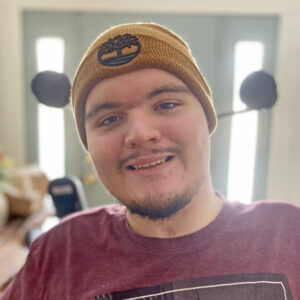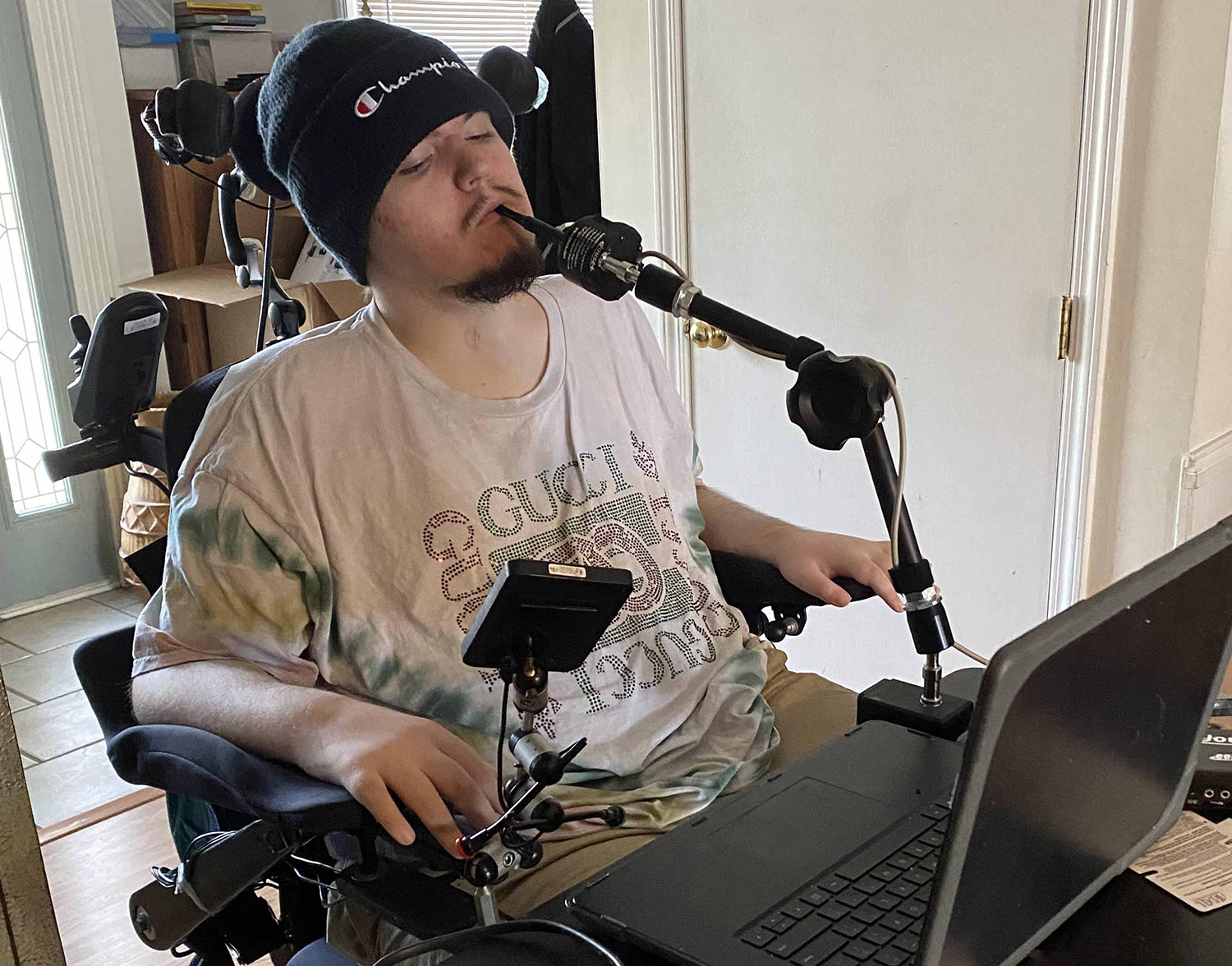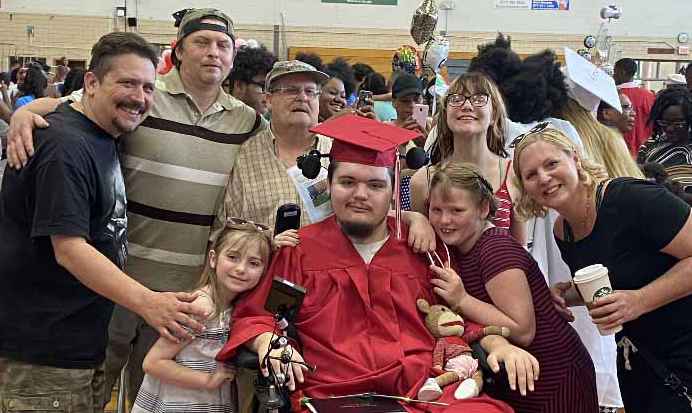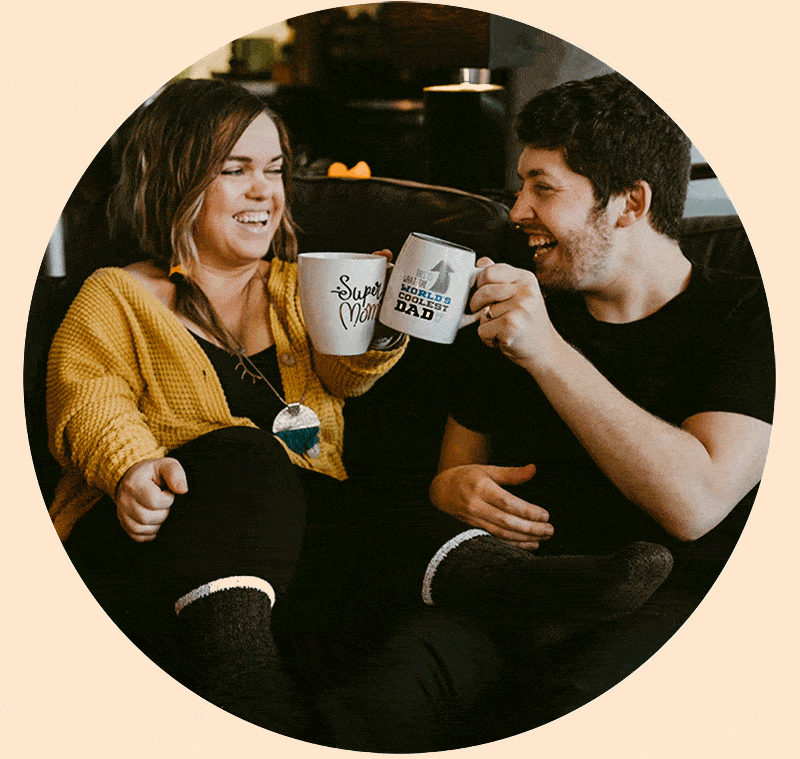 A random encounter helped launch Cyrus Anton on a new career trajectory after he was paralyzed in 2020, but Anton, a C4 quadriplegic, isn’t leaving his future success up to chance.
A random encounter helped launch Cyrus Anton on a new career trajectory after he was paralyzed in 2020, but Anton, a C4 quadriplegic, isn’t leaving his future success up to chance.
Designing a Career Path
Not everyone is ready to connect with and learn from other wheelchair users in the immediate wake of a spinal cord injury. For Cyrus Anton of Brownsburg, Indiana, peer mentoring from other United Spinal Association members provided a motivating glimpse of what was possible.
“I met a lot of people that were in the same situation as me,” he says. “I know a guy who’s in his last year of law school, and I know a couple of professors. These are all people who’ve done terrific things with their lives and not only did their accomplishments show me I’d be OK, but I wanted to be counted among them. I want to be doing terrific things too.”
The biggest questions for Anton were where and how. These answers started falling into place when he attended an Eagle Scouts alumni event. He had just become an Eagle Scout before his injury and attended not knowing what to expect. “I was talking to a guy there who asked me what I wanted to do with my life and when I told him I didn’t know, he said, ‘You and I should sit down and figure out how we can help each other,’” says Anton.
The guy’s name was Rick Reesner, and he owned a company that does 3D modeling and visualization, and graphic design. The two met for coffee and Reesner offered Anton a position as an apprentice graphic designer. Though he was artistically inclined, Anton had watched his mom work doing jobs that had nothing to do with her bachelor’s in fine arts degree. He was skeptical whether art could be a fulfilling or financially sustaining career.

Still, Anton had always been a creative guy and an art fan and he knew learning graphic design would give him a positive outlet, something other than his circumstances to focus on. “I don’t know if it’s specifically this that helped or just having a creative outlet that made me focus on something other than wishing things were different, but the job has definitely helped with my depression,” he says. “Feeling like you’re creating something or putting a positive effort toward something, really helps.”
After learning to use a mouth stick, Anton has found Photoshop an ideal means to express himself. “I’ve seen some really great things created with a mouth stick. But, as someone who has tried to use it many times, it’s very difficult. Whatever you’re drawing or painting on has to be at a very precise angle; it can get tiring for your jaw; and the biggest frustration is if you want to change to a different color brush, someone has to stop and do that for you. Photoshop takes away those limitations,” says Anton.
Anton’s dream project is to design a logo for the inpatient and outpatient rehab center he wants to own one day. He envisions a first-of-its-kind center with a residential section offering apartments and support staff for those who need them as they transition back into society as newly disabled people.
“The sad thing is, there are only three inpatient rehab centers across the entire state of Indiana,” says Anton. “I want to be as independent as possible and my thought is, if I own one of these centers, not only will I be financially independent, but it will also give me a place where I can live on my own and not be a burden on my family who are acting as impromptu caregivers.”

Kids Say the Darnedest Things
Anton says mentoring eighth-grade boys through his church has given him hope that he can influence their attitudes toward disability.
“I love being around kids because kids aren’t afraid to ask you the hard questions. They’re not afraid to point something out. I love that innocence. I’ve been asked everything from, ‘How do you use the bathroom?’ to ‘Is your wheelchair comfortable?’ The questions may seem a bit silly to someone who lives with a disability, but I usually shoot pretty straight and give them a good answer. A lot of adults have preconceived notions about a lot of different disabilities, and I just hope that the kids don’t grow up to be that way. I hope that they not only value disabled people, but that they teach their kids one day to value disabled people. It’s like learning a new language — it may be hard to do in class, but if you’re in a different country where everybody speaks that language all the time, it’s pretty easy to pick it up. So, if you’re around disabled people all the time, it’s going to become second nature.”
Can’t live without:
My Jouse sip-and-puff mouse. It allows me to have a livelihood and is even more versatile than a standard mouse.
Advice for people who use personal support workers?
Be patient. It’s a long process, more paperwork than you ever want to do, and not all agencies are created equal.
If you could talk to your your pre-injury self with all you know now, what would you say?
I wouldn’t say what’s going to happen, but I would say a lot of your views will change.
Why did you get involved with United Spinal?
Being exposed to resources like the Tech Access Initiative has opened up my world and helped inspire me to try to start an Indiana chapter.


